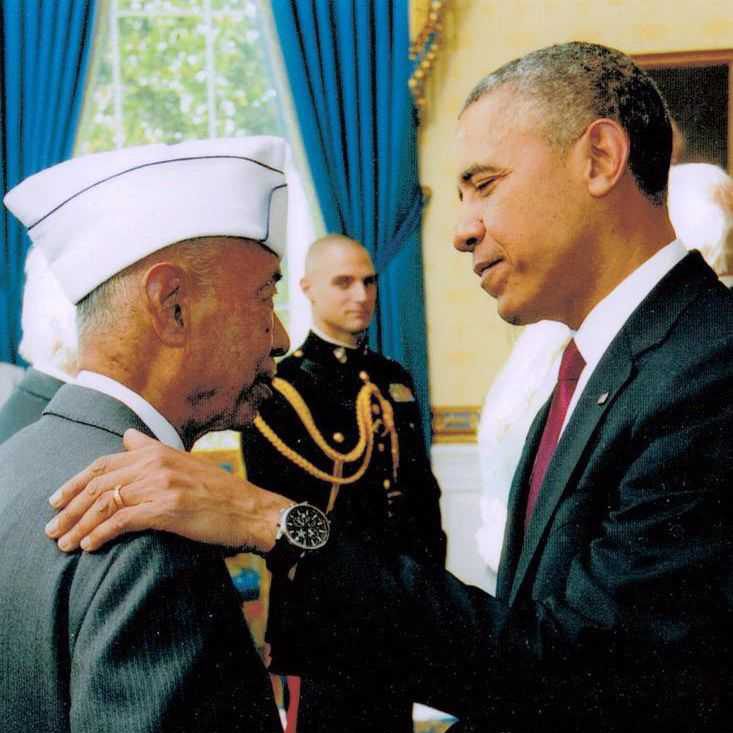Explainer 10:

Why It Matters
Excerpt of a speech by Filipino nationalist Emiliano Aguinaldo that draws on American political ideals and history.
Teacher Background
In their long battle for equity and justice, Filipino veterans had to overcome two hurdles.
The first was to teach Americans, in particular members of Congress, about the history and legacy of U.S. imperialism in the Philippines. Like many Americans, members of Congress were ignorant of the U.S.’s imperial past and the ways that it shaped both nations. And without understanding this history, decision-makers didn’t grasp how and why Filipinos came to serve in the U.S. military and that they were considered full service members of the U.S. armed forces. Filipino veterans spent countless hours walking the halls of Congress and visiting legislators, explaining the U.S.-Philippines colonial past and the specific terms of the Rescission Act.
The second hurdle, of course, was to convince Americans why they should care. For too long, for too many people, including members of Congress, it was easy to look the other way, to brush off demands for justice, to justify non-payment of benefits for fiscal reasons, to ignore, in the words of activist Jon Melegrito, Americans’ “little brown brothers.”
Many of the interviewees in the Duty to Country oral history collection reflect on why Americans should care about Filipino veterans. Chief among these is that Americans made promises to veterans, and to Filipinos specifically, in return for their service during World War II. The Rescission Act broke these promises. It took nearly 75 years of advocacy to achieve some measure of equity and justice. To this day, the Rescission Act has never been repealed or struck down.
This Explainer asks students to define equity and justice, two terms Filipino veterans used as they made the case for benefits. Students listen to veterans, activists and historians reflect on the reasons Americans should care about this history, then are asked to write an op-ed making their own case for how and why Filipino veterans can be recognized in the future.
Suggested Teaching Strategies
-
Start by asking students to come up with their own definitions of “equity” and “justice.” Share out a few examples and then discuss how these two terms are related. Also ask students to describe the difference between the two terms. One distinction to draw out is that equity includes financial compensation for harm, whereas justice might be a broader concept that involves recognition of a historical wrong, an apology and possibly changes to ensure the situation does not repeat.
-
Ask students to name the demands of Filipino veterans and their advocates (full benefits including pensions, healthcare and the right to naturalize as citizens, as well as recognition that the U.S. was wrong to pass the Rescission Act and deny Filipinos these benefits). Then ask them to name the different ways that Filipino veterans achieved equity and justice (1990 Immigration Act, 2009 Filipino Veterans Equity Compensation Fund, 2017 Congressional Gold Medals). To what extent do students think that equity was achieved? To what extent do they think justice was achieved? Are there additional actions that could be taken to achieve full justice for Filipino veterans?
-
Have students watch one or more of the interview clips reflecting on why Americans should care. Ask them to note the different reasons advocates give for why this history matters.
-
Ask students to propose a new commemoration that ensures Filipino veterans are not forgotten. This could include an event, a memorial, a holiday, etc. But to get their idea off the ground, they need to make the case to Americans why they should care about the story of Filipino veterans. Have students write an op-ed (800 words) introducing their idea and explaining why it’s necessary and how their idea will achieve justice for Filipino veterans. Students can incorporate quotes from the oral history interviews into their op-eds, or make their own arguments. The Op-Ed Project includes tips and guidance for how to structure op-eds.
-
Optional: Have students compare how Filipino veterans appeal to American ideals around justice and fairness and the ways that earlier generations of Filipinos, going back to Aguinaldo, used the language of American democracy and liberty to convince Americans they should care.
Curriculum Standards
Common Core: Middle School
- CCSS.ELA-LITERACY.RH.6-8.2 Determine the central ideas or information of a primary or secondary source; provide an accurate summary of the source distinct from prior knowledge or opinions.
- CCSS.ELA-LITERACY.RH.6-8.9 Analyze the relationship between a primary and secondary source on the same topic.
Common Core: High School
- CCSS.ELA-LITERACY.RH.11-12.2 Determine the central ideas or information of a primary or secondary source; provide an accurate summary that makes clear the relationships among the key details and ideas.
- CCSS.ELA-LITERACY.RH.11-12.9 Integrate information from diverse sources, both primary and secondary, into a coherent understanding of an idea or event, noting discrepancies among sources.
